NOTE: If you haven’t seen “Lonely Are the Brave,” or read Edward Abbey’s “Brave Cowboy,” you might be better served to find the film or the book, watch and/or read them, and then come back to this article…JS
Six years ago, in October 2014, Tonya and I traveled to Albuquerque, New Mexico, to see just how much that part of the West has changed in the five and a half decades since the film “Lonely Are the Brave” was released in 1962. Much of the movie was shot on location, at various sites in Albuquerque, near the Volcanoes on the west side of the city, and beneath and near the summit of the Sandia Mountains, just east of the city. Our plan was to relocate scenes in the film, and reshoot the location almost 60 years later, to determine what non-stop sprawl and urban development has done to the Duke City over the last half century.
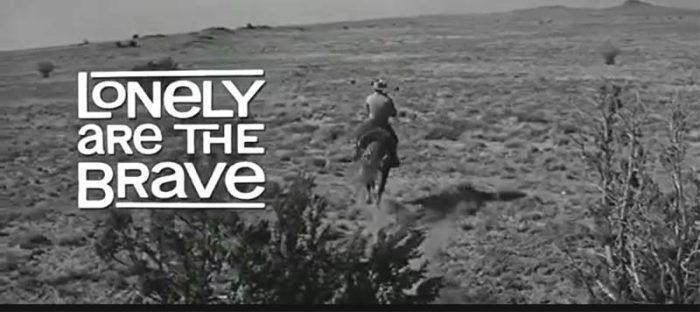
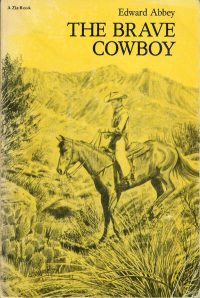
“Lonely Are the Brave” starred Kirk Douglas, Walter Matthau, and Gena Rowlands, and was based upon the Edward Abbey novel, “The Brave Cowboy.” The product of our efforts appeared in the December 2014/January 2015 issue of The Zephyr. You can find that story AT THIS LINK.
I had first seen the film when I was only 13 or 14 years old. Just a couple years after its theatrical release, “Lonely Are the Brave” showed up as a “Saturday Night at the Movies” offering on NBC. Even then, I was sort of a loner and on that particular evening, my last minute decision to not attend a basketball game with my family had caused yet another argument with my parents. But from the very first scene, “Lonely Are the Brave” resonated viscerally with me, in some very deep part of my soul. I even felt a certain vindication on that evening, thinking that there was nothing wrong with the notion that I preferred solitude and quiet, to the noise and mayhem of large elbow-to-elbow gatherings. I suspected Jack Burns might have wanted to avoid that basketball game as well.
A decade would pass before I’d discover “Desert Solitaire” and Edward Abbey and learn that he was the author of the novel upon which the film was based. It was a revelation for me.
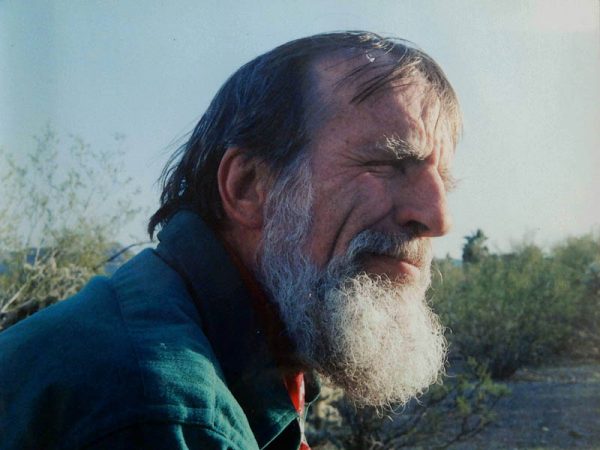
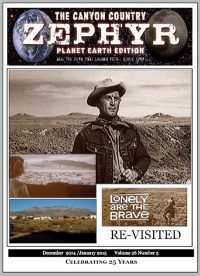
When Tonya and I published our “Lonely Are the Brave—Revisited” feature, we knew we weren’t done with this project. There were film locations we had been unable to find, and we planned a return visit to complete our search. We also began to hear from our readers, many of whom had shared the same fondness for the film as I had, and for as many years.
In 2018, I received an email, out-of-the-blue, from a man named Chris Soldo. He had been a longtime admirer of the film, had found our story online, and wanted to share his own knowledge of the production of “Lonely Are the Brave.” Chris turned out to be a wealth of information for us.
I learned that Chris Soldo has been in the film industry since the 1970s and has worked in dozens of films, including “Thunderheart,” “Winter Kills,” “The Natural,” and “Men in Black.”
Though he was too young to have participated in the filming or production of “Lonely Are the Brave,” his interest in its history led him to Madison, Wisconsin, the home of the Kirk Douglas Film Archive.
He discovered a treasure trove of documents related to the film’s production, including a list of location shots, which resolved almost all of our remaining “mystery locations.” And perhaps most significantly, Chris found, scanned and sent us a long letter that author Ed Abbey had written to the film’s director, David Miller, regarding the Dalton Trumbo screenplay. It includes Abbey’s scene-by-scene notes on the screenplay, including suggestions and changes, and a very detailed biographical profile of the character “Jack Burns.”
Chris also directed us to the source of all this invaluable information and soon we were in contact with Mary Huelsbeck, the Assistant Director of the Wisconsin Center for Film and Theater Research which is part of the University of Wisconsin-Madison. She was enthusiastic about our project and graciously gave us permission to repost many of the documents that Chris had originally shared with us. We’d like to express our gratitude to Ms. Huelsbeck and to the University for their cooperation. And to Chris, of course.
BACK TO THE DUKE CITY & THE MISSING FILM LOCATIONS…
Crossing 4th Street & Gibson Blvd…at the same time
On our first reconnaissance trip to Albuquerque, we depended solely on our instincts, our sense of direction, and our ability to align real time geographical features with specific film location images that we’d brought along as screenshots. For the most part we did quite well. We found sites on the westside of Albuquerque near the Volcanoes, some of the “escape” locations at the base of the Sandias, and thought we’d located the vicinity, at least, of the Bondi home. But we struggled to find other locations. In particular, we were stumped by one of the early scenes, where Burns and Whisky try to cross a busy highway. The “location shots” documents from the Kirk Douglas archives solved the mystery and helped us understand as well how Hollywood film editing can play tricks on the viewer.
According to the document, the first “street crossing” by Burns occurs on US Hwy 85 near the junction of 2nd and 4th Streets. The “continuation of highway crossing” happens along “highway near airport.” We easily found the junction at US 85 and discovered how much has changed since 1961. As the scene opens, Burns is riding Whisky along the edge of an irrigation canal that runs adjacent to the highway. He looks ahead to a complex of commercial buildings, including a busy truck stop. None of that is still there. We were able to utilize another website, “historical aerials,” to see the changes. A review of old aerials, going back to the late 1950s, shows that this stretch of the highway was dramatically altered between 1961 and 1967. A massive flood control project required the removal of all those buildings and a new waterway called the “North Diversion Channel Sediment Basin” removed any sign of the old truck stop and associated buildings. The site was at the far north end of the city and even sixty years later, it still has a more rural feel to it.
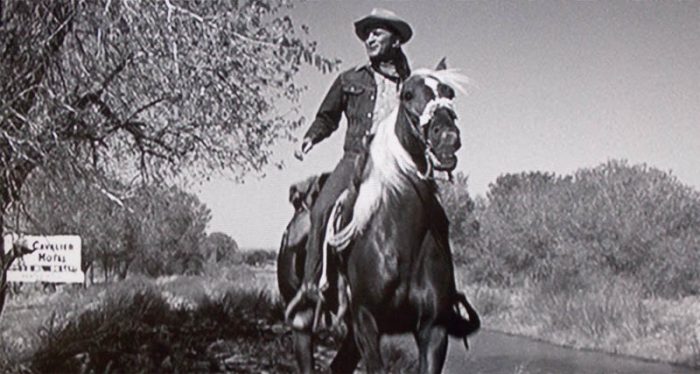
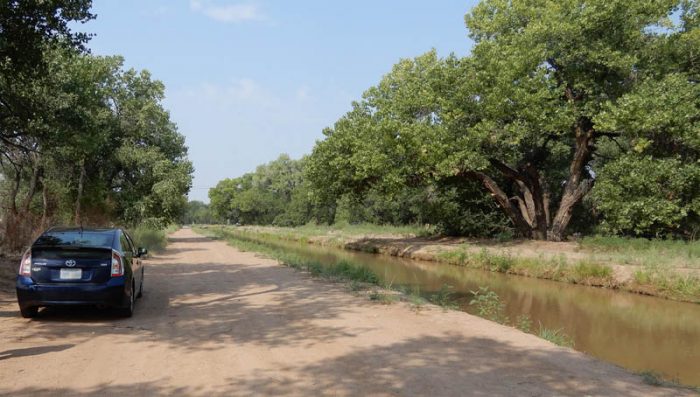
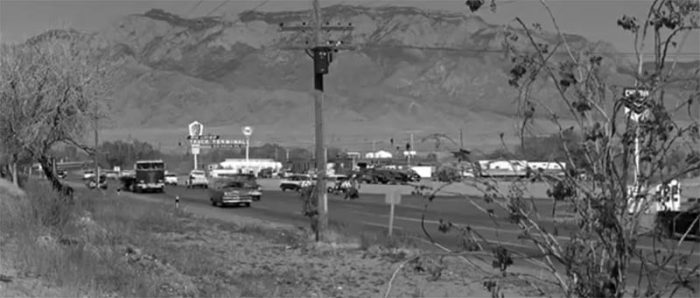
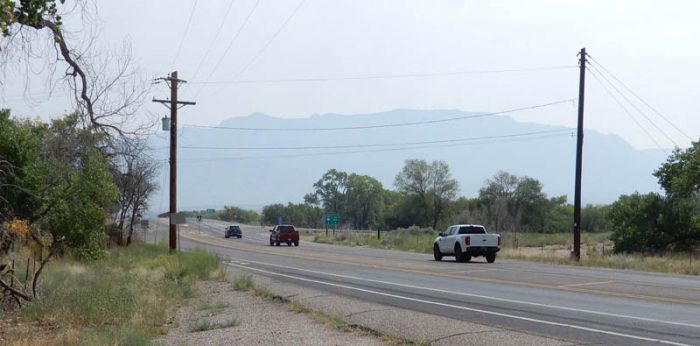
In many of the screenshots from this film location, you’ll see a billboard advertising the Cavalier Motel, which was located further south. We found these two old creosote posts in about the right location that may be remnants of that long gone sign.
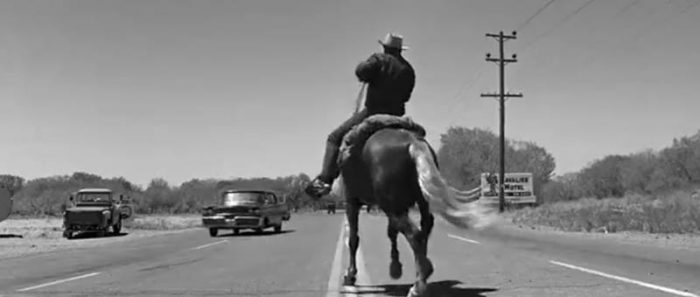
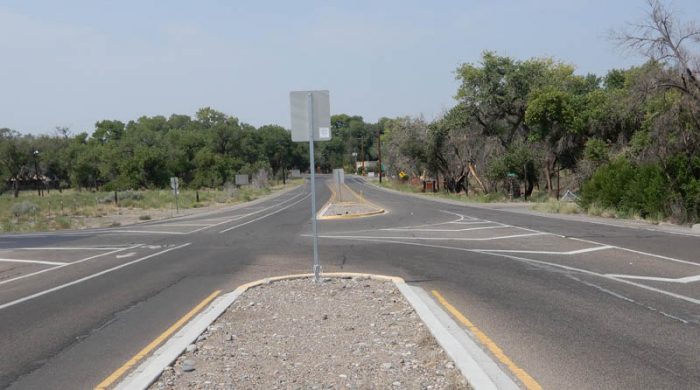
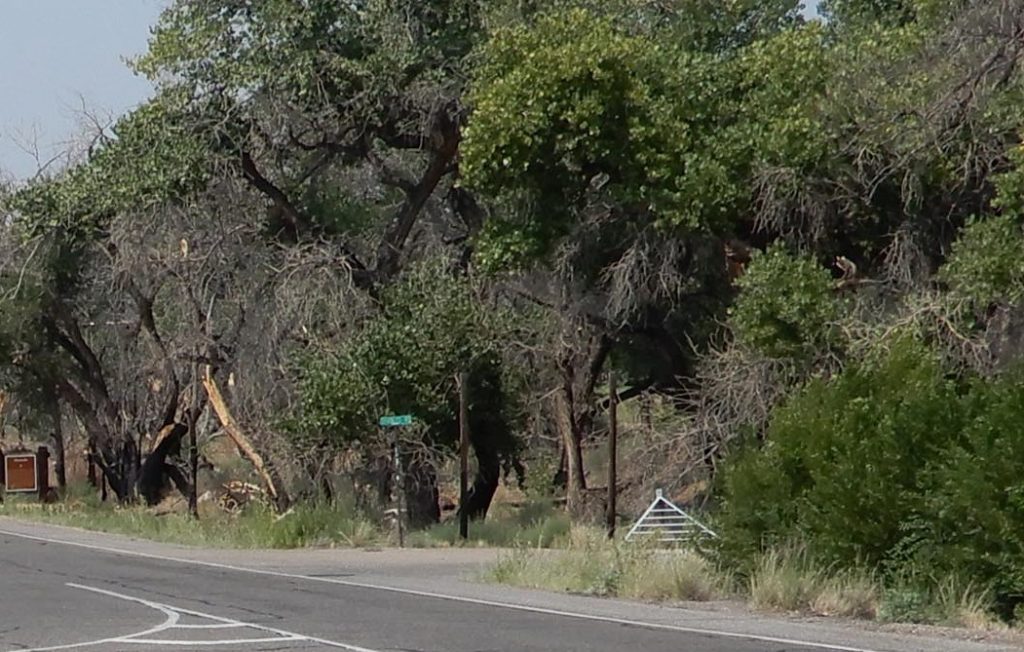
And here’s where the Hollywood film trickery comes in. Burns starts his crossing of the highway on 4th Street, on the north end of the city. But when he reaches the other side, he rides past a stack of junk cars and into an old Spanish cemetery. In fact, the San Jose Cemetery is miles south, on Gibson Blvd, just west of what is now Interstate 25 and the airport.
This was the scene from the film…
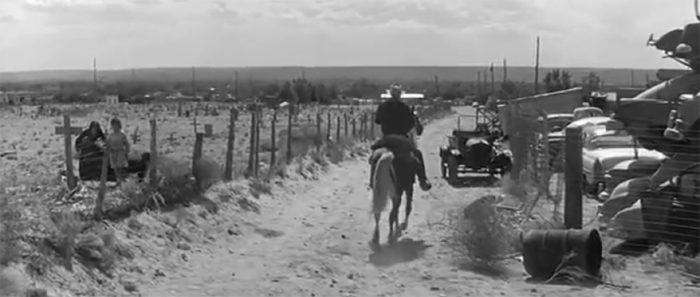
And in 2020…
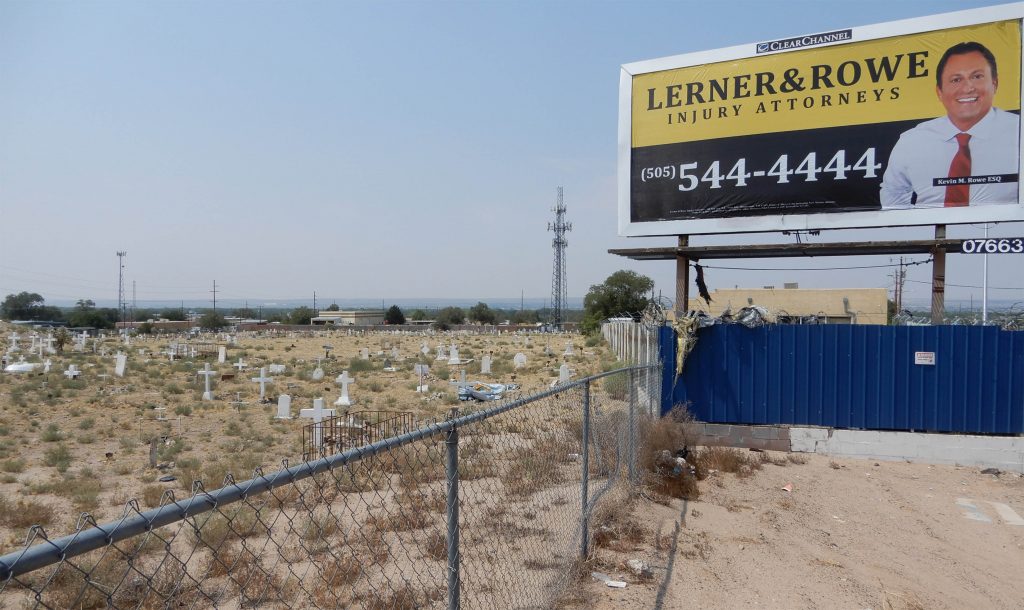
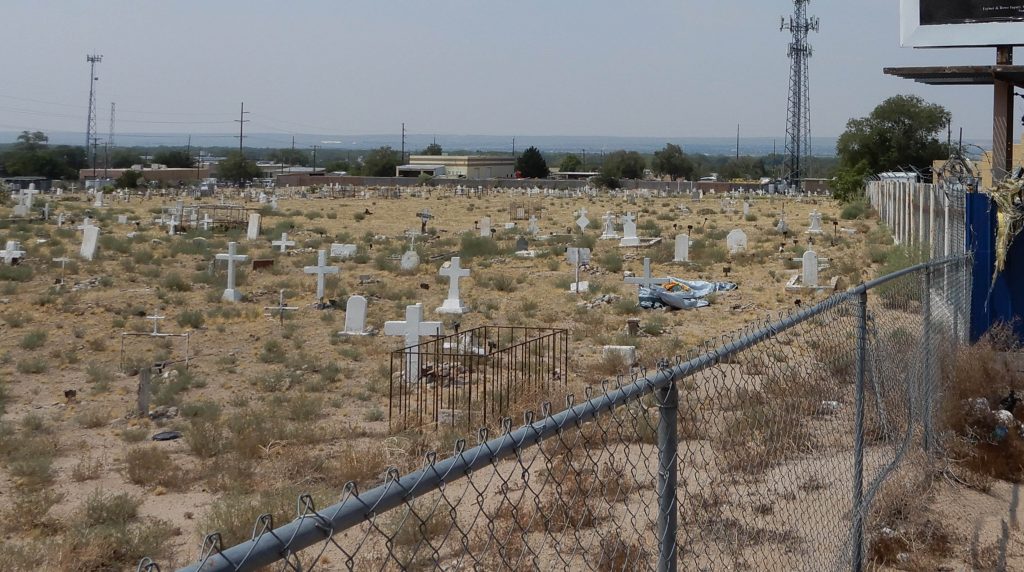
THE BONDI HOME…
The film documents described the setting for the Bondi home at “Edith & Tyler Avenues,” a site not that far from the 4th Street scene. Further, a May 28, 1961 story from the Albuquerque Journal provides more specific information. The movie was being called “The Last Hero” during production and had gained the attention of the local media. Kirk Douglas was flying from Las Vegas on that day to resume filming, and Gena Rowlands a day later. Filming had been briefly delayed by high winds, but there were more scenes to shoot, including the exterior shots of what was to be the home of Paul and Jerri Bondi. In 1961, the house belonged to Mr. and Mrs. Arch Napier, whose address was reported to be at or near 7000 Edith NE.
Tonya and I easily found the intersection of Edith and Tyler, though the location didn’t match the specific address. At first we assumed that the original building had been torn down and replaced by some of the faux adobe McMansions that are spreading across the city. But by studying our screenshots and reviewing segments of the film, the Bondi home sat a couple hundred yards back from Edith Avenue. I pulled up our Google aerial images of one structure that were now obscured by trees and we could not see clearly from the road. In precisely where it should be, we found this structure. It’s been enlarged and remodeled, but look closely.
Here is a screenshot of the east side of the Bondi home….
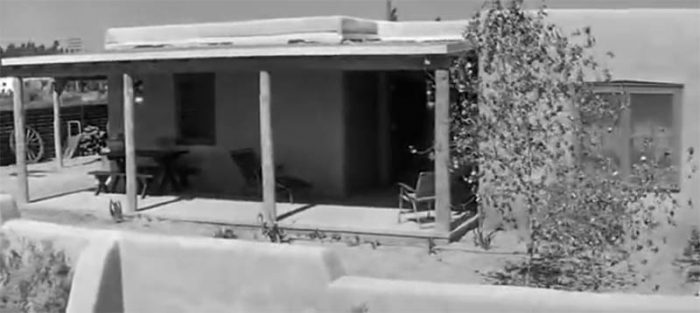
…and this is a Google aerial of the structure now.
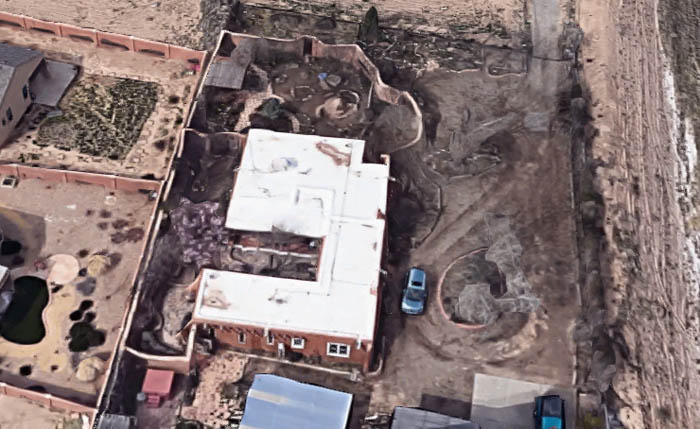
In 1961, the view from the backyard offered an unobstructed view all the way to the mountains. A lot has changed in sixty years. From this wide open panorama:
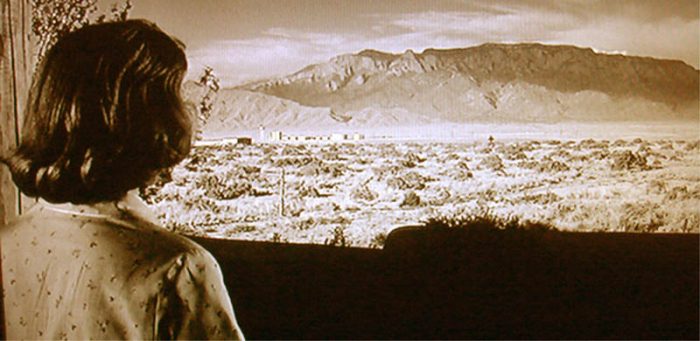
to this…
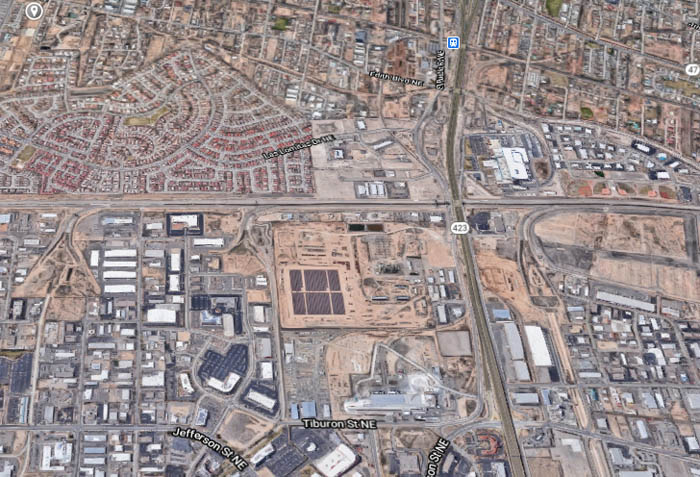
THE LA CUEVA CABIN
After Burns’ escape from jail and visit to the Bondi home, he makes a bee line for the Sandias. He pauses to rest his horse and himself near an old stone cabin that many of our readers believe is the La Cueva cabin, just a few miles up the narrow Juan Tabo road from Tramway Highway. We easily found the cabin but again, we came to the conclusion that some film trickery had been employed to make the scene work. The first sight of the cabin, by both Burns and the Sheriff looks like this…
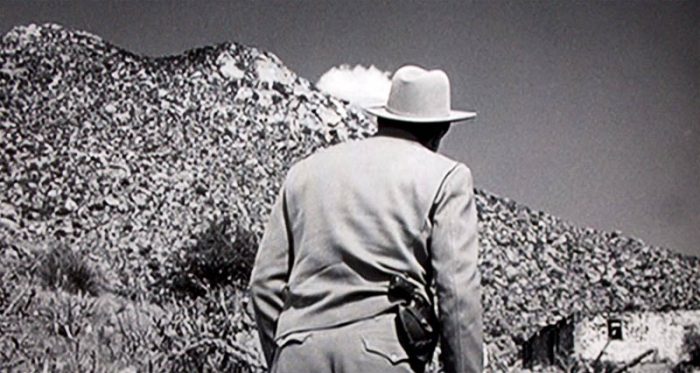
We found this location six years ago, and we simply think that it is a different structure. In 2014 we were able to pinpoint, within a few feet, where the long shot was located. And we could find no sign of it. But subsequently, as Burns and Whisky approach what we believe is the La Cueva cabin, the camera brilliantly tracks them through the decaying doors and windows of what was then an unattended stone ruin. If this sequence is indeed the La Cueva cabin, it has been painstakingly restored and even gentrified (if that’s possible for a ruin). It no longer feels like an honest ruin. It’s been unavoidably sanitized while it was being preserved.
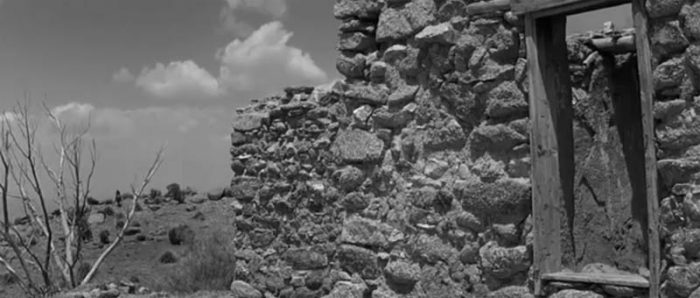
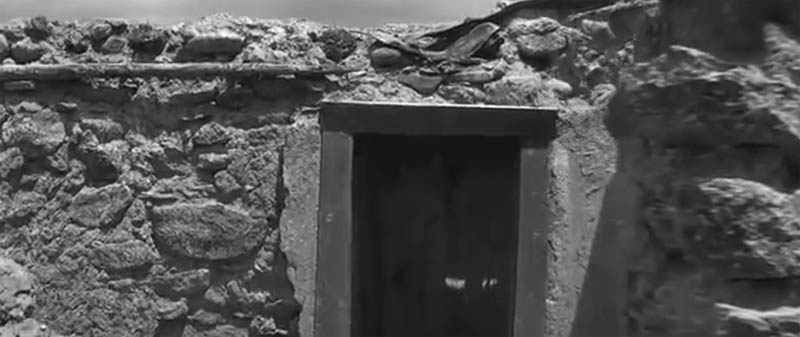
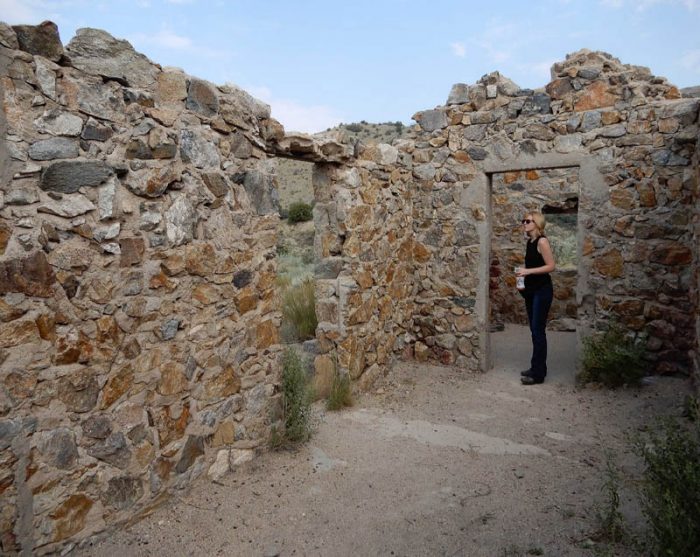
This is our best guess. If any longtime Albuquerquians are familiar with the film or the cabins, and could provide additional information, we’d be happy to hear from you. Also note that the view from the cabin and the canyon has changed markedly in 60 years. Here is a screenshot from the film.
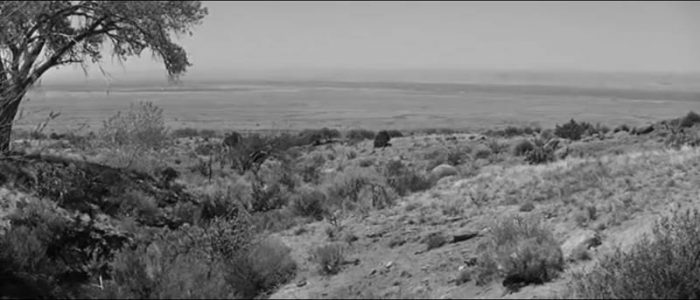
Today, most of that open space has been swallowed up by massive sprawl, including the towering Sandia Resort.
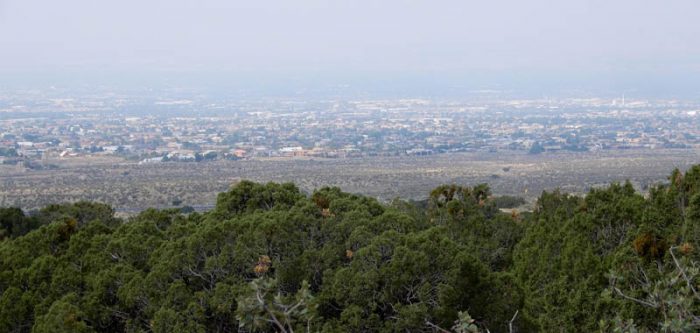
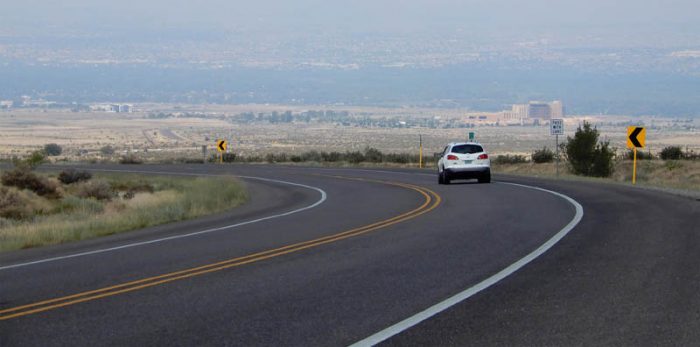
SANDIA CREST
Almost half of “Lonely Are the Brave” is shot near the base or the summit of the Sandia Crest. In 2014, we found most of those scenes that were shot along Juan Tabo Canyon. But we ran out of time and had to save our drive to the top of the Sandias for later. Though the ridge and accompanying array of towers and transmitters are less than a mile away when seen from the city, to get up there requires a two hour drive (No, we didn’t feel like walking).
The 1961 screen images from the film and the black and white aerials that we discovered on the historic aerials website suggest that the Sandia Crest had not yet become the popular tourist destination it is today. But updated aerial views show that by the 1990s, much of the crest had been developed and looked much as it does now.
In fact, our journey there was a relatively quiet event, considering it was a hot August Sunday afternoon down below. Normally the summit would have been packed with tourists and Albuquerqians seeking relief from the heat. But the Pandemic and thick smoke from wildfires across the West had dulled the desire to make the trip. Our views were limited from the heavy haze and, of course, few wanted to risk catching the virus, though the fresh air and limited numbers of people made us feel like we really weren’t playing fast and reckless with our lives.
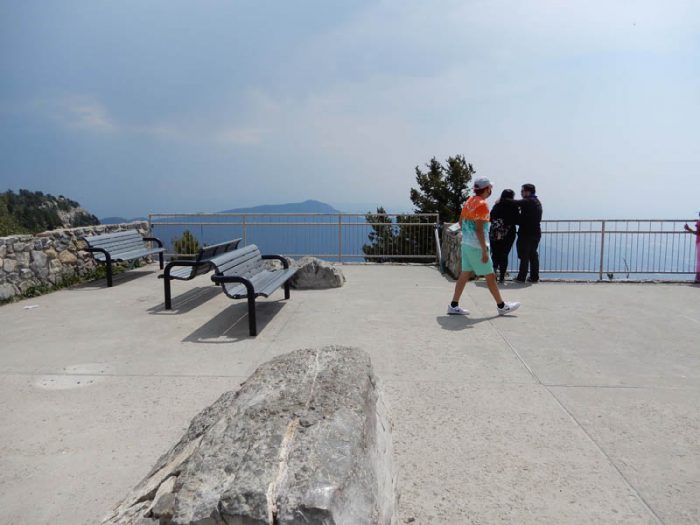
The Crest itself has been drastically altered from 1961. A massive parking lot was built in the area below the summit that can handle a hundred or more vehicles, and no doubt Jack Burns would have bristled had he made it all that way to the summit in 2020 and discovered that he needed to buy a damn permit! A large viewing area, complete with concrete pad, benches and railings were all part of the experience now. A large building had long ago been constructed just below the rim and normally offered food and refreshments. But COVID-19 had shut it down. A trail winds its way along the rim to a point south of the parking lot. Even on this quiet day, many mask-clad tourists walked in Jack Burns’ footsteps or those of the deputies that pursued him.
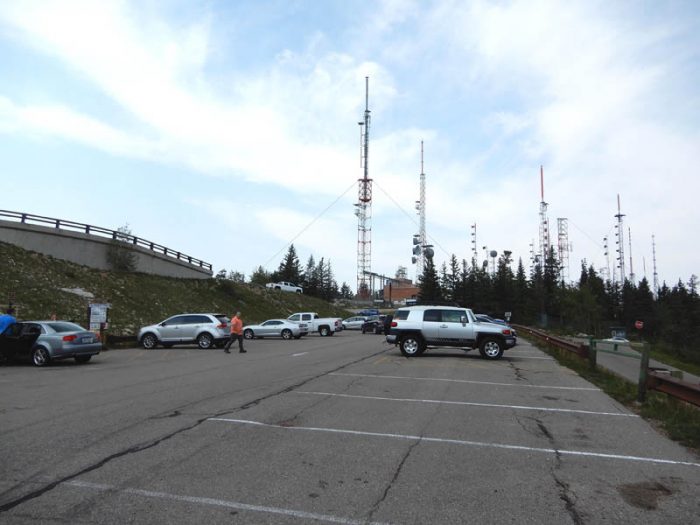
Here are a few “before & after” images from the film and the way it looks now…
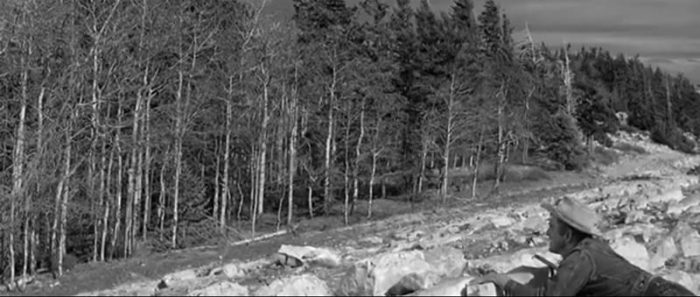
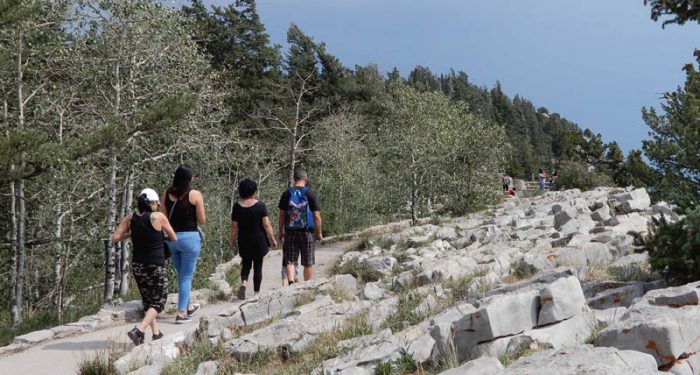
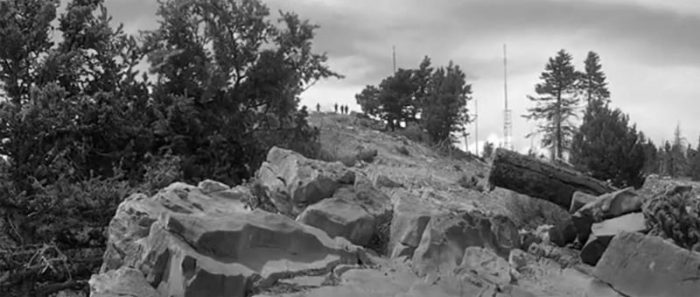
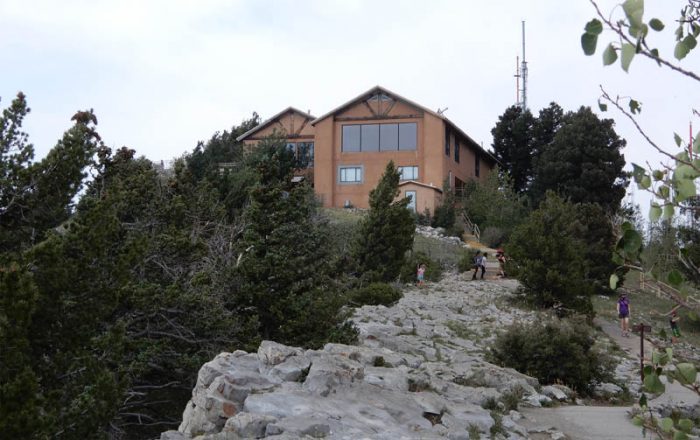
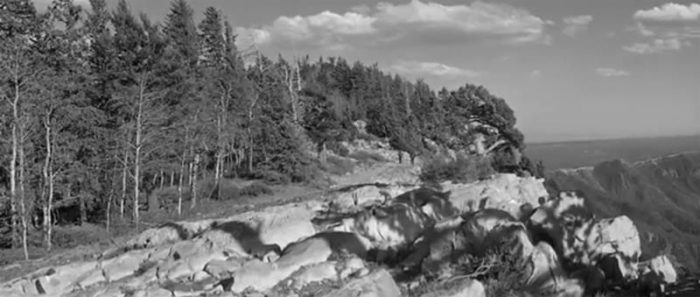
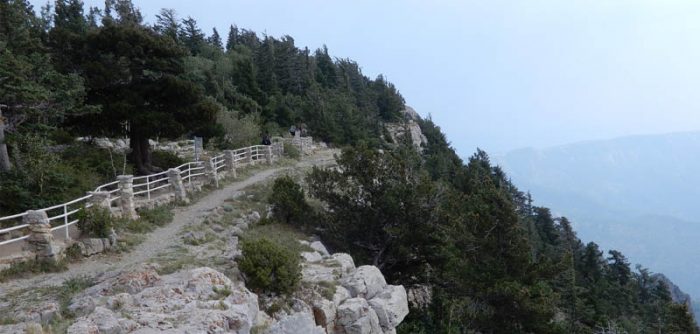
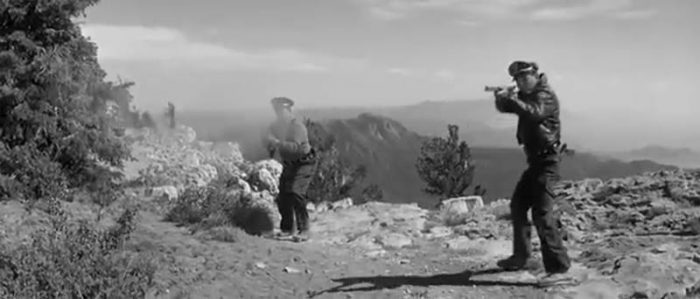
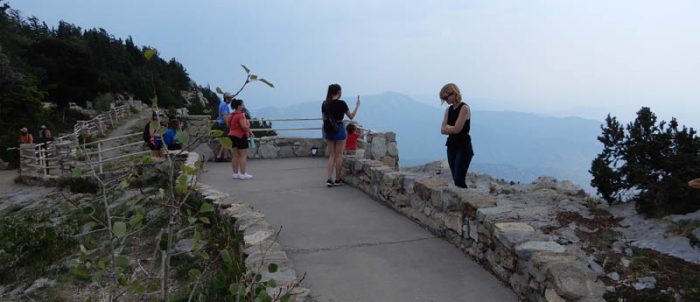
THE MYSTERY IMAGES
Despite our best efforts, we were still having a hard time relocating the scenes of Hinton and his truck as he makes his way across the country, from Joplin to Tulsa and beyond, until his fateful rendezvous with Burns and Whisky. Most readers thought the scenes were shot somewhere in Tijeras Canyon as Interstate 40 descends into the Rio Grande Valley. But then I went back to the very first email from Chris Soldo two and a half years ago. Again, Mr. Soldo had the answer.
The fact was, none of the Hinton scenes were filmed in New Mexico. Hinton, played memorably by Carroll O’Connor, and his truck were filmed at three different locations. All of them were near Santa Clarita, California, just up the road from Los Angeles. Using Google earth and with some additional help from Chris, we found all the film locations.
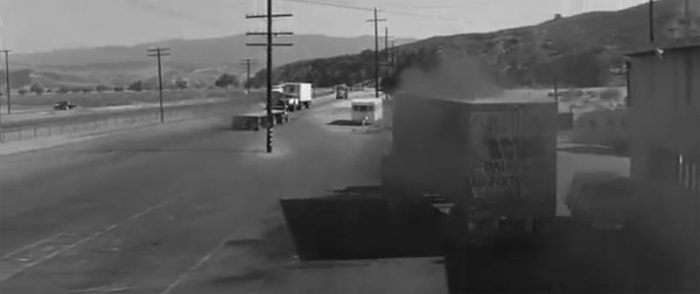
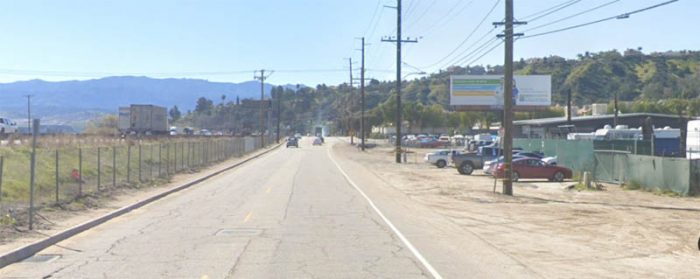
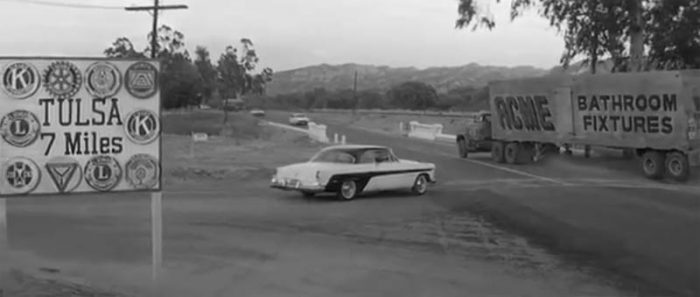
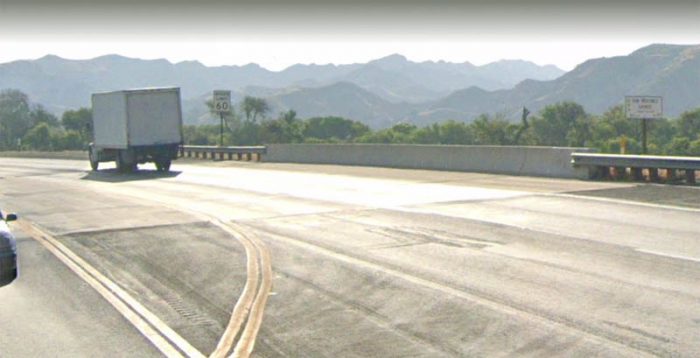
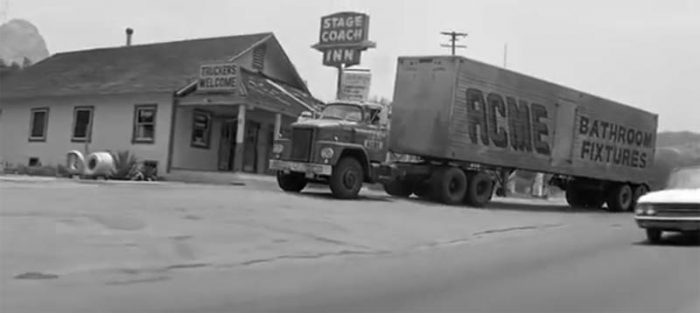
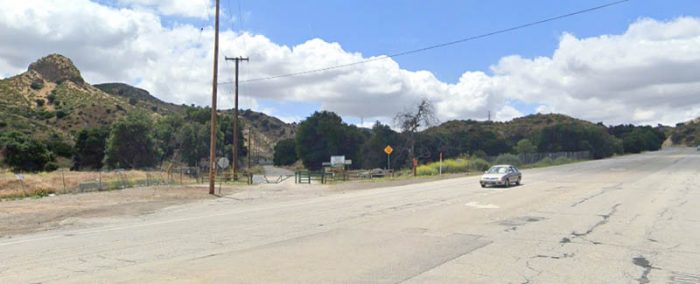
THE KIRK DOUGLAS DOCUMENTS…
The location shots
This information surely made our work easier. The location lists and continuity sheets led us directly to some of the film locations that had previously left us scratching our heads.
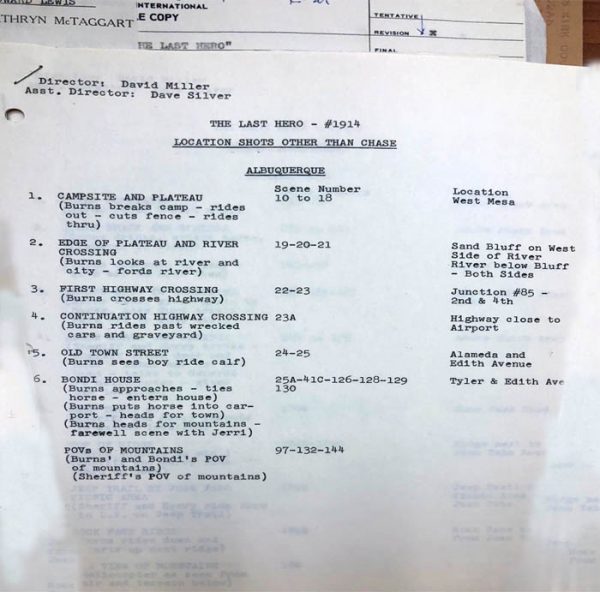
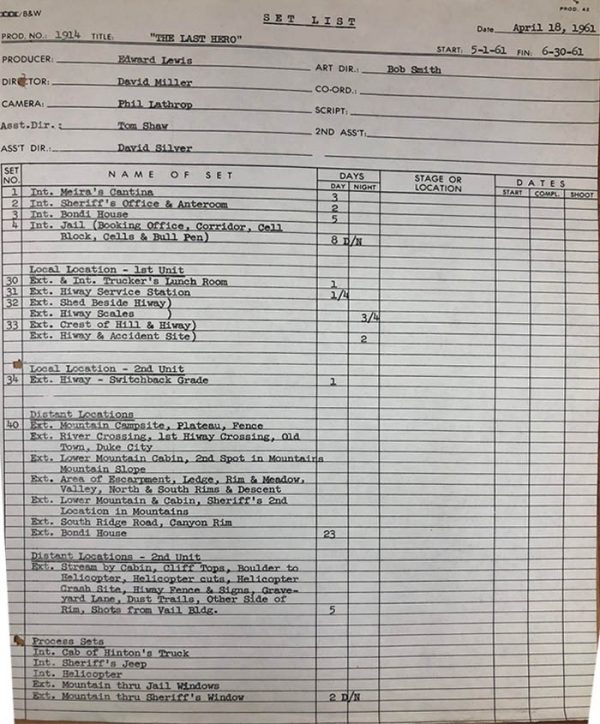
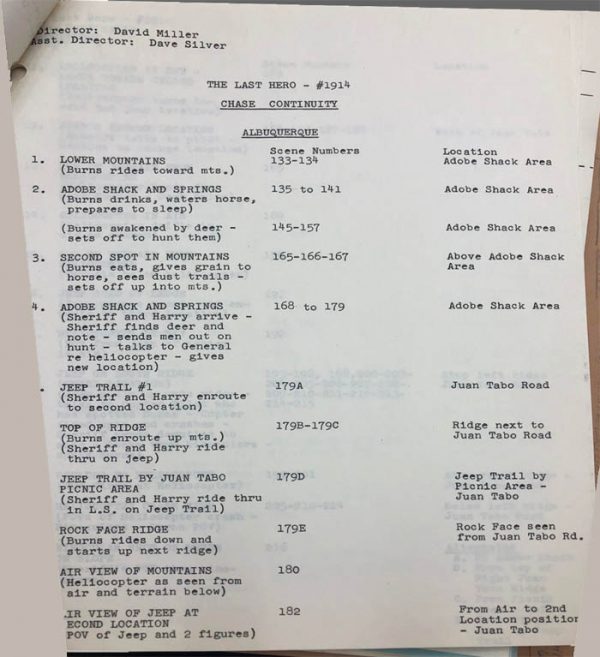
Abbey’s letter to David Miller
Among the documents at the Kirk Douglas archives in Wisconsin is a wonderful letter from Edward Abbey to the director of the film, David Miller. Abbey had written “Brave Cowboy,” the novel upon which the film was based, in 1956. Now, just five years later, seeing it brought to the screen must have been particularly rewarding. Abbey was only in his early 30s when Kirk Douglas bought the film rights and now, Ed was offering suggestions and urging changes to a screenplay penned by one of his own heroes, Dalton Trumbo.
The Hollywood screenwriter had been highly successful in the late 1940s and early 1950s, but Trumbo had also become one of the “Hollywood Ten,” when he refused to testify before the House Un-American Activities Committee (HUAC) in 1947. The committee’s search for Communist influences in the motion picture industry infuriated Trumbo; consequently he was blacklisted by the Hollywood establishment for the better part of the decade. But Kirk Douglas himself had helped break the blacklist when he insisted on Trumbo to write the script for “Spartacus;” likewise Douglas sought out Trumbo to pen the screen version of “Brave Cowboy.”
Most of Abbey’s suggestions proposed minor changes. Yet the most striking difference between the book and the film version is never mentioned. In Abbey’s novel, the character Paul Bondi is being sent to prison for refusing to register for the draft, an idea that in 1962 would have not garnered much public support. Ironically, within five years, draft card burning had almost become a fad.
In the Trumbo screenplay, Bondi is sent to prison for assisting undocumented Mexicans gain access to the United States. If Abbey was ever passionately against anything, it was illegal immigration, for which he took a lot of criticism in his last years. So there’s a touch of irony here, in Bondi’s motivation as Abbey first proposed, and as it evolved in the film.
In Abbey’s letter to Miller he makes some requests. Here are a few of them (an image of the letter in its entirety also appears below).
The title. Please don’t change the title. Please. THE BRAVE COWBOY is just right, has just the proper ingenuous and myth-evoking quality, and furthermore, in the setting of the story, adds the note of irony that every good book–and movie–should have. Please don’t change it. Please. “The Last Hero” is not bad, I’ll grant you, but–it ain’t fitting. For one thing, haven’t we had too many “last’s”?–like “The Last Hung” and “The Last Angry Man” and “The Last Days of Pompei” and what not? Mohicans… “The Last Hero” is not accurate because we still have room for heroes even in America, always will have, why Dalton Trumbo is one of my heroes. Heroism is not and never will be dead–but cowboyism is.
There are small errors, mistakes that Abbey himself made in the book, that he urges Miller to correct. He is particularly concerned about misinformation on feeding horses!
Sc 41, p 25: Burns would not ask Jerri to feed the horse “half a bale of alfalfa” and “a peck” (half a bushel) of grain. Far too much, might kill the beast. That was my mistake.
Ed also objected to the way Burns so easily and in good cheer gives up trying to convince Bondi to break jail with him. Abbey writes:
Burns should not be allowed to make his departure so quickly and–as it seems–cheerily. Have Burns make greater effort to take Bondi with him. The cowboy has gone to considerable trouble and expense to rescue Bondi, and in failing, his disappointment and exasperation should be clearly apparent. Let Burns describe in fervent words the life he pictures for Bondi, Jerry Bondi, the child, and himself, in some lost mountain valley in the Sierra Madres. Burns is a romantic, a Don Quixote, perhaps a bit “touched”, like most solitary outdoorsmen, sheepherders and the like. We should also think of him as being not wholly self-sufficient. He is getting old, and knows it, and what’s more may even be a shade lonely. A lonely man, aware of his loneliness. His scene with Bondi is his next-to-last contact with the human community.
Finally Abbey wanted the director to truly understand Jack Burns. To assist, he created a biography of sorts. Here is how Ed Abbey saw his ‘brave cowboy.’
Born in the Midwest, orphaned while still a boy, brought up by an uncle on a New Mexico ranch. Always in trouble, always half-wild, an untamed and untameable lad, more kin to the horse and lion than to the human type, Burns grows up with a passionate LUST for physical liberty, the abolition of external constraint, a vital burning need for the out-of-doors, the mountains, the open desert. Nevertheless the war, when it comes, attracts our hero, he volunteers, hates the military discipline but once overseas, in combat, makes a pretty good soldier, especially in guerilla-type warfare, distinguishes himself in action, wins a medal. Among his comrades is Paul Bondi, his complementary opposite in many ways. The two become close friends, live and fight together, help each other through the agony of the war, resolve to continue their friendship through life.
Burns gets in trouble, spends about a year in a military prison, which confirms his hatred for authority, organization, discipline, etc., and gives him forever an almost pathological fear of confinement and restraint. After the war Bondi and Burns continue their friendship in school, both going to the same Western university. Bondi makes a good student but Burns, restless and still wild and dreaming of some kind of impossible romantic freedom, cannot endure the smell of classrooms and textbooks, breaks out of college during his second year, never returns. As a sheepherder, hunter and cowboy he continues his pursuit of his half-formed, half-imagined dream. In and out of trouble, prone to physical violence and unable to suppress his distaste for authority, he spends more periods in jail, breaks out, becomes a permanent refugee from the law, makes a precarious living as a freelance sheepherder and horse tamer, dividing his time between the Southwest and Old Mexico.
Marriage has become, by this time, also impossible for him: most women would be terrified by his way of life and the routine and responsibility of family life terrifies Burns. The only women he ever knows are the border town whores and the village Indians of Mexico–and Paul Bondi’s wife, with whom, during his wanderings, he carried on a wary courtship that almost but never quite blossoms into acknowledged love.
In general, Burns is satisfied with his way of life, desperate though it may seem to others–it’s the way he’s made to live,the only way he knows or wants. His hazardous success gives him sufficient confidence to continue, and to continue with humor, shrewdness, even considerable gaiety and grace. Yet he is not entirely free from an inner trouble: he is lonely, and at times becomes aware of his loneliness. Though he lives like a lone wolf, he is still drawn back to the human pack, again and again, though each return becomes more dangerous for him, as the omnipresent forces of law, organization, industry, the Machine State, closes off, one by one, most of the traditional pathways of escape.
Abbey concluded…
Perhaps to understand Jack Burns we have to see him as a 19th century type–not a cowhand but a “Mountain Man”–born by a cruel irony of fate (I like that phrase) 100 years too late.
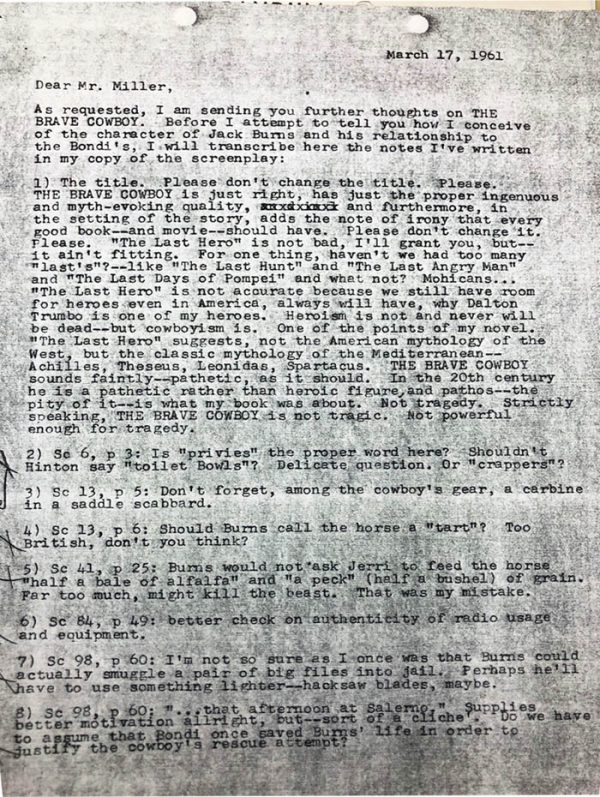
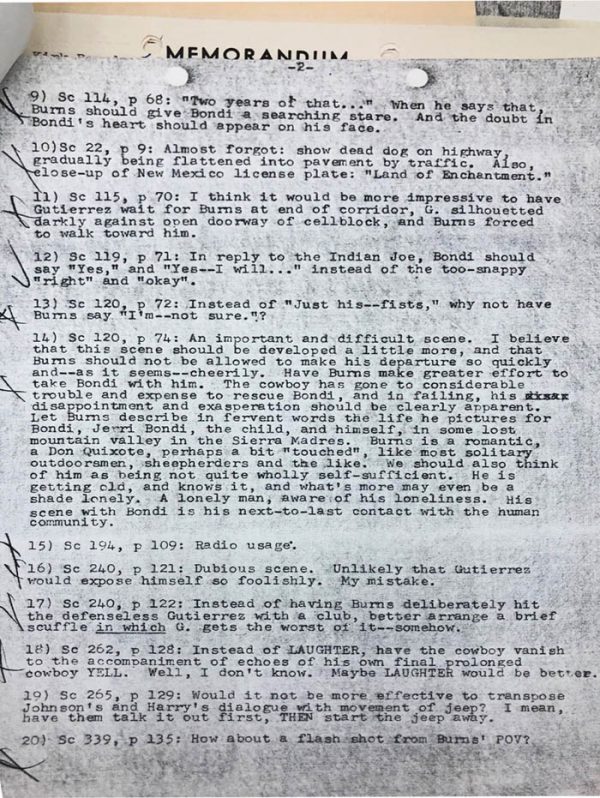
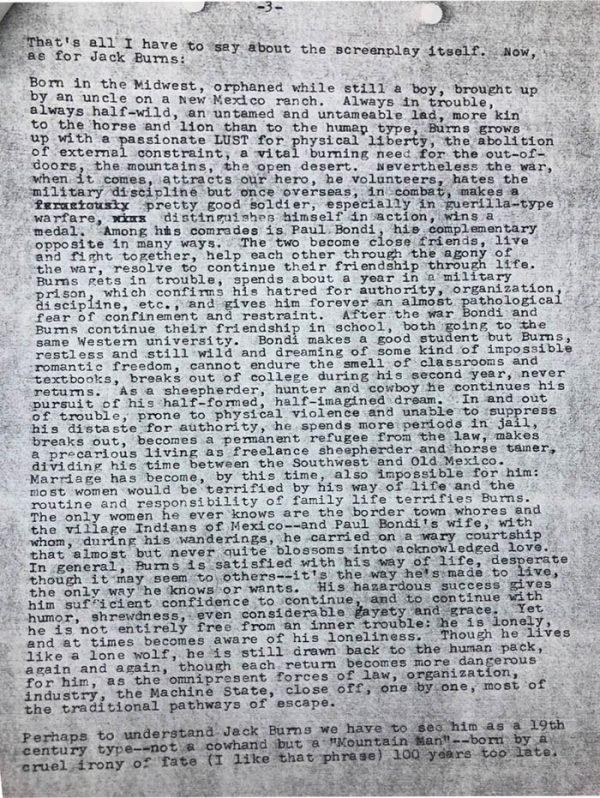
Like I noted at the very beginning of this story, if you have never seen “Lonely Are the Brave,” or never read “Brave Cowboy,” and you took the time to read this article anyway, then most likely none of it will have resonated with you. After all, what’s the point in returning to the site of a 1962 contemporary cowboy movie and simply reshooting film locations? Who cares?
But that, in fact, is what’s so striking. In his letter to David Miller, Abbey concludes:
Though he lives like a lone wolf, he is still drawn back to the human pack, again and again, though each return becomes more dangerous for him, as the omnipresent forces of law, organization, industry, the Machine State, closes off, one by one, most of the traditional pathways of escape.
Born by a cruel irony of fate … 100 years too late.
This was the message, the warning, and the lament, from a time almost 60 years ago, that from our frenzied perspective in 2020 still looks enviously peaceful and serene. But it is as revealing about Abbey and those of us who love the film, as it was about Jack Burns.
In the post-war world of 1960, America was changing rapidly and most of its 180 million citizens willingly came along for the ride. But few wondered where the growth and prosperity would lead us. Even fewer realized we’d travel so quickly from this scene…
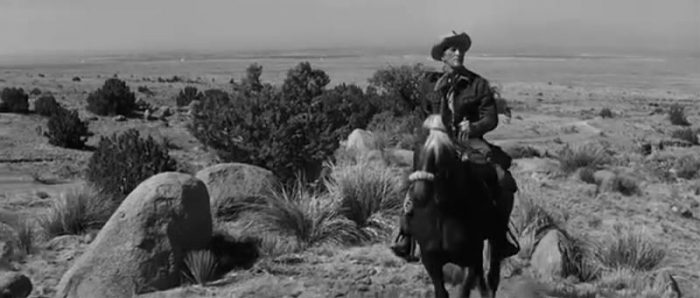
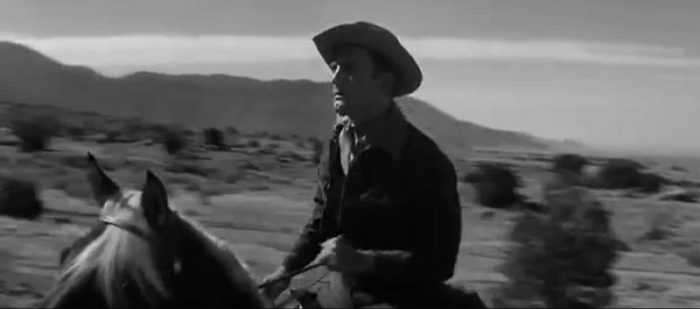
to this…

And from this…
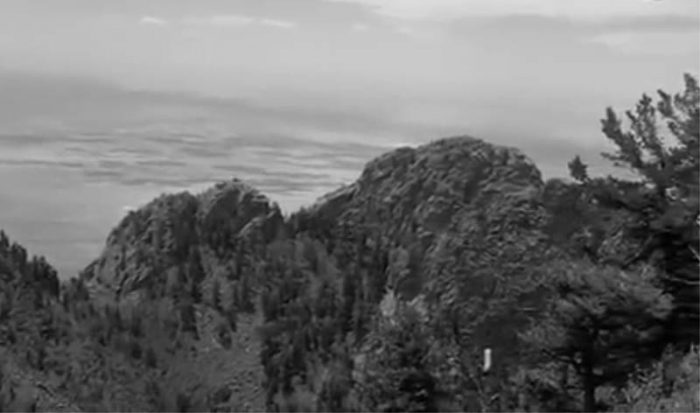
to this…
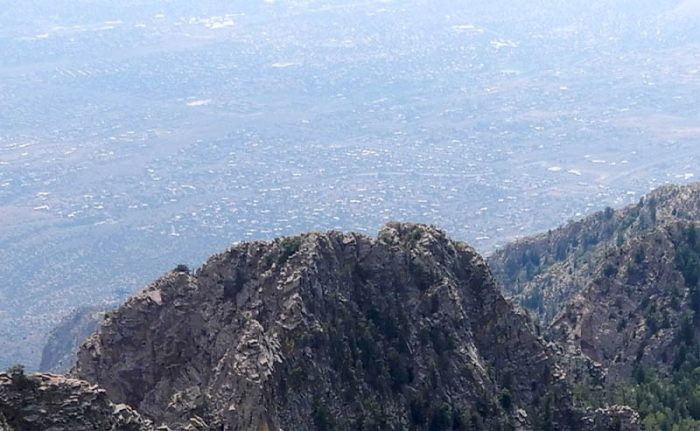
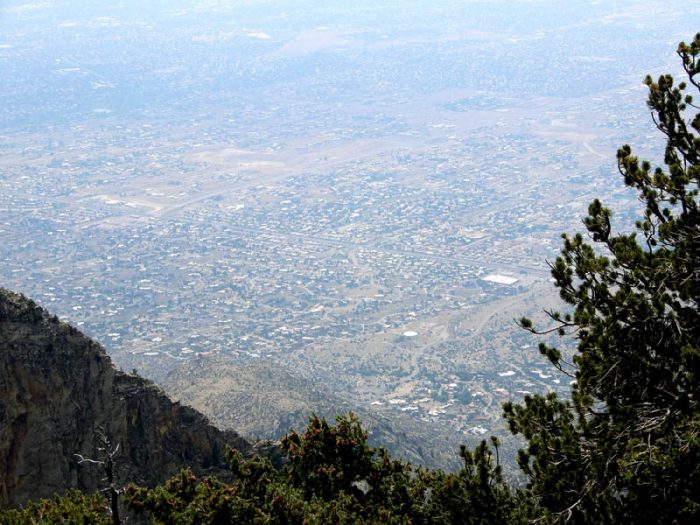
…in such a short time. In the relative blink of an eye. But that’s the ultimate message of “Brave Cowboy” and “Lonely Are the Brave.” It’s not just about the frenetic lives that most of us lead, but the rapid loss of freedoms and liberties and lifestyles that only visionaries like Abbey dared to predict might occur in what then seemed to most like the distant future.
In Jeri Bondi’s kitchen, in the summer of 1961, Jack Burns complained…
“A Westerner likes open country so he has to hate fences and the more fences there are, the more he hates them…It’s true. You ever notice how many fences there are getting to be? And the signs they got in ‘em…No hunting. No fishing. Private property. Closed area. Get moving. Go away. Get lost. Drop dead…”
Could that lament be any more appropriate or timely than it is today in an America of over 330 million, in a society lost in its own frenzied rush to go nowhere? Jack Burns and Ed Abbey, and many of us who love the film were (and are) the outliers, those humans who still seek to identify themselves as “individuals,” in a world that is moving with breathtaking speed to a society that emphasizes the “collective.” Those fading souls who still want to live out at the edge of things. While Burns felt and feared the modern world was closing in around him, there was still some wiggle room. There was still an escape route in 1961, away from the “thunder and roar of steel, rubber, and flesh, dim faces behind glass, beating hearts, cold hands—the fury of men and women immured in engines.”
But where do the outliers go now? The options are dwindling. Sixty years ago, “Lonely Are the Brave” asked: What’s next? Now we know.
And now we ask the very same question.
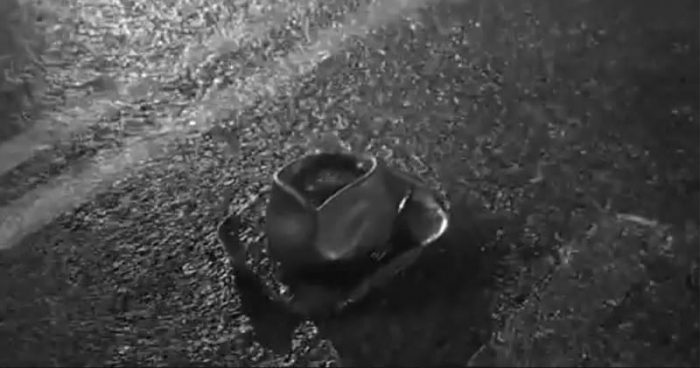
Jim Stiles is Founding Publisher and Senior Editor of the Canyon Country Zephyr.
To comment, scroll to the bottom of the page.
Zephyr Policy: REAL NAMES ONLY on Comments!
Don’t forget the Zephyr ads! All links are hot!

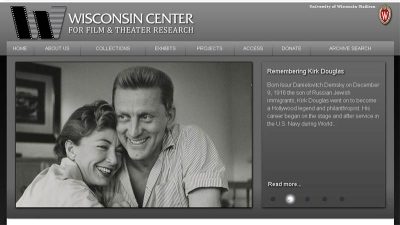

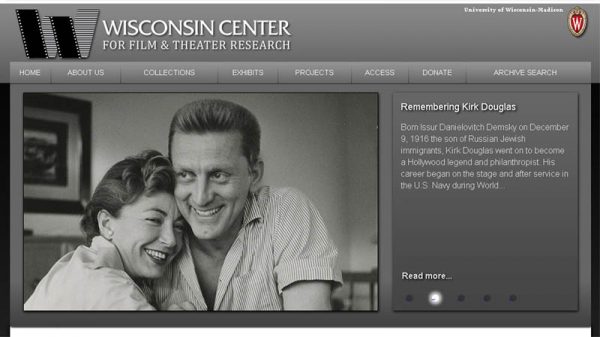
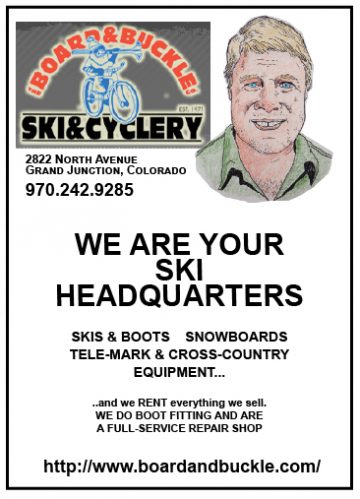
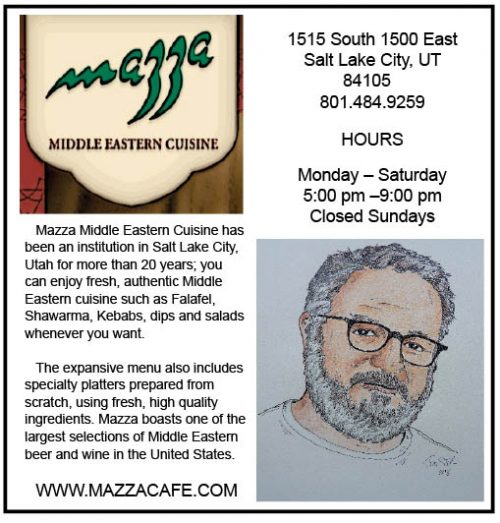

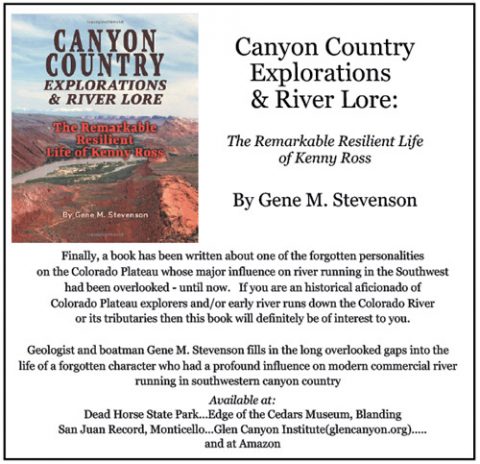
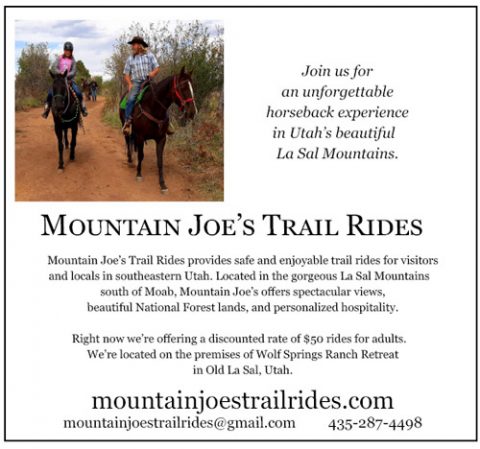
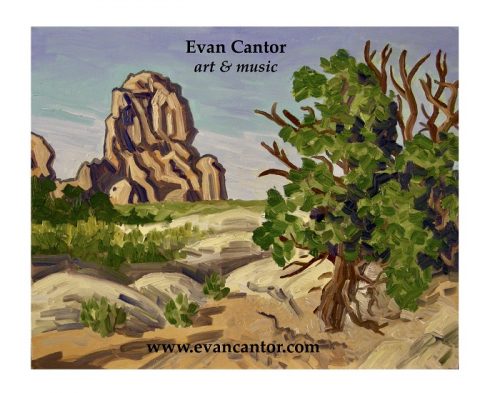
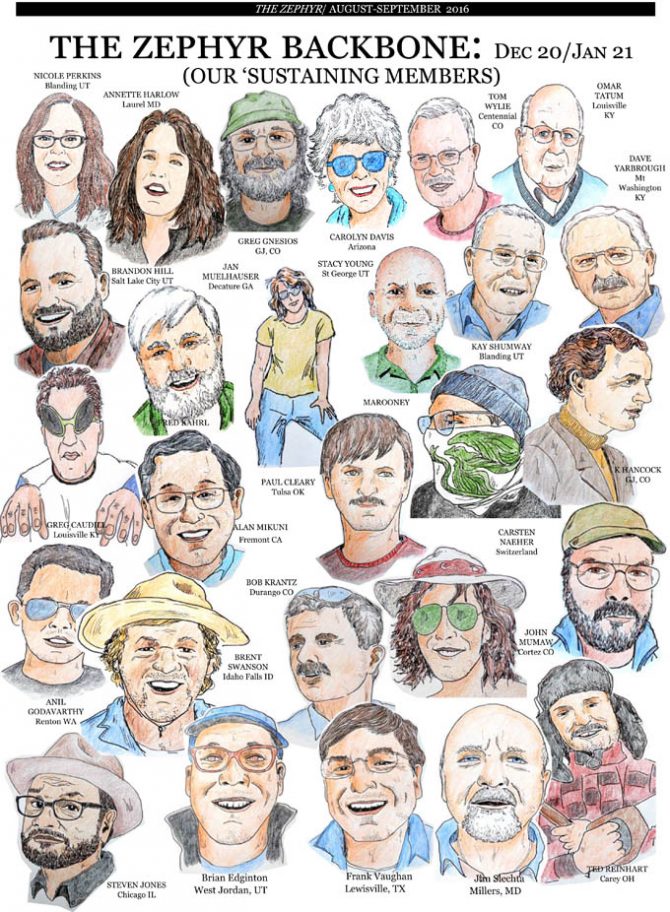
Here is a link to a very nice tribute/documentary about the film with interesting behind the scenes impressions.
https://www.youtube.com/watch?v=HGhoOsm8IWQ
That link is dead now. Can it be found elsewhere?
Wonderful story and odyssey on “Lonely Are the Brave.” Thank you for the memories. I live at the base of the Sandias and often, when we look up to those stunning peaks, we think of Jack Burns making his getaway. Very interesting that the final scene was NOT Tijeras Canyon like we always thought. One final note on my end that you did not mention:
I had read somewhere once that Kirk Douglas considered this to be one of his favorite films. That’s pretty darn cool!
(Sorry Abbey didn’t get his wish about keeping the book title.)
I have read in more than one place that it was his one and only favorite film. He certainly inhabited the character completely. And I, too, don’t understand why The Brave Cowboy was not used for the title, particularly as it would have created many more sales of the book! I don’t think a lot of people were aware of the movie being based on that early work until many years later.
I was shocked that the truck scenes were not Tijeras Canyon! I mean, the scenery looked just like the canyon where Central Avenue continues into the pass.
I saw the movie originally in about 1965, but I didn’t know that it was Albuquerque until I saw it again in 2004, after having moved to Albuquerque in 1995, and then, I noticed that the mountain scape was what I now see every morning!
Absolutely fascinating. I love this type of sleuthing.
Hi Priscilla….Greg G. here. In the late 90s I worked at Petroglyph NM on Albuquerque’s west side and spent much time roaming the Volcanoes area. It was the only part of the park that was not being over run by development. We loved Albuquerque at the time but could see that it was being just eaten up by growth. Glad to be in Grand Junction now.
(Priscilla and I are currently on the Grand Junction Historic Preservation Board).
Jim, you are Tonya are having a lot of fun bringing the old and the present together. As you know I got a copy of the film and very much enjoyed it. I can relate to the feeling of being fenced in because I grew up in a time when my friends and I had full reign in and out of my small town. This led to an interesting event which illustrates how this freedom was taken for granted. When we first moved to Pullman, Washington I decided to go deer hunting. Driving around I came to a farm house in the woods and decided they would not mind if I went looking for deer near by. A man came out of the house with a rifle. I had a rifle in my hands. I decided that if anybody got killed I would not do the killing and placed my rifle on a fence and went to take my chewing out. I realized that I had acted like I was in Utah or New Mexico and that I was indeed trespassing. That cured my desire to hunt in Washington. Even today I bristle as the no trespassing signs and government restrictions are reducing my sense of freedom. However, I am happy to say that I can still go most places in San Juan County, Utah and take photos.
Those of us who’ve lived in places like Nelson and Searchlight, Nv, now in or later years transposed to ever growing Las Vegas, hear your words and those of Abbey and yours well and understand the feeling. Gail and Donna Andress
I tremendously enjoyed the article about “Lonely Are the Brave”. Ed Abbey was a friend of mine, and I knew him as well as anyone could ever know Ed. In his letter to Jim Miller about the screenplay I could readily see that Ed was describing his own life and his own views preserved in his fictional character. I learned a few things about Ed I didn’t know in this article and that was refreshing. Well researched, well written. Well done!
This is the ‘new’ link to the Kirk Douglas Papers in Wisconsin:
“https://digicoll.library.wisc.edu/cgi/f/findaid/findaid-idx?c=wiarchives;view=reslist;subview=standard;didno=uw-whs-us0102an”
Letter from Kirk Douglas
From the Los Angeles Times, March or April 1989 (exact date missing)
Death of Writer Edward Abbey
I was very sad to read in your paper that author Edward Abbey (“Thoreau of the American West”) has died (Part 1, March 16). In your detailed obituary, I was astonished that no mention was made of his book “The Brave Cowboy.””
I came across a paperback edition of this book around 1960, and was deeply moved. I bought the movie rights and finally persuaded Universal to allow my company, Bryna, to make the film, which was brilliantly written by Dalton Trumbo and produced by Eddie Lewis. In the cast with me were Gena Rowlands, Walter Matthau and William Shatner, and introducing Carrel O’Connor in a small role. They all gave marvelous performances.
In the opening scene, I played Jack Burns (Edward Abbey), who rides across a wide plain and comes up to a large wire fence. I get off my horse, taking a pair of pliers, cut the fence and ride on. In your article you quote Abbey: “I am the one who loved un-fenced countries.”
I never met Mr. Abbey, but we wrote to each other several times. I apologized to him that the studio insisted on changing the title of “Brave Cowboy” to “Lonely Are the Brave.”
In the more than 60 films that I’ve made, this is my favorite. I am very pleased when I get a letter, or someone comes up to me saying it is also their favorite.
Hollywood was capable of transferring the feelings of this great environmentalist to film. People will always be able to see as well as read the beliefs of this great man in “Lonely Are the Brave.”
KIRK DOUGLAS
Beverly Hills
This letter was supplied by Jim Cahalan, Professor of English at Indiana University of Pennsylvania from the Abbey collection at the University of Arizona in Tucson, with the permission of Clarke Cartwright Abbey.
I was 12 when my father who worked for trans world airlines brought the first jet service to albuquerque a boeing 707 brought Kirk Douglas to albuquerque to film lonely are the brave
Thanks for posting all this great information/photos. I have one correction. Your caption for the Stage Coach Inn, “Route 126 near De Valle, CA,” isn’t right. It was at 22968 Sierra Highway. Old newspaper ads for the place are available online. They include the address.